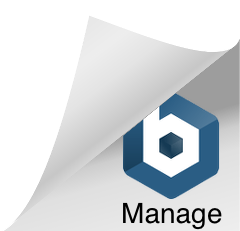Ask a child what a squiggle on a piece of paper could represent and you can expect a phenomenal variety of ingenious answers. Some answers like a boat, mountain, road, or train track could transpire into crazier renditions of superhero force fields, a tree in the wind, or a dragon in flight. And they’re right. One line doesn’t have to mean one thing, or even just a handful of things – it can represent anything. After all, it could be 20’ long and made of bricks, or 2” long and made of clay – why not?
The reality is, there is a phenomenal variety of possible solutions once you allow your mind to identify things that you wouldn’t necessarily deem “likely” – putting any preconceived notions about what should be correct aside. Children provide a beautiful example of divergent thinking – illustrating the spontaneous flow of ideas that draw upon personal experiences and environment, enhanced through collaboration, and maximized once any pre-conceived notions have been abolished.
This same divergent thinking paths apply to adults when it comes to solving problems. For any given problem, there are an infinite number of influences and solutions. Brainstorming with team members in an open and positive environment enables you to discover even more. Enabling divergent thinking doesn’t require substantial financial investment – just a commitment to soft and hard skills, and a candid assessment of organizational culture.
To foster divergent thinking in your organization, let’s and break it down into 5 key tasks:
1. Acknowledge that everything is related: One line on a piece of paper can mean many things; just like an issue holding up a negotiation can be the result from an infinite number of issues. The theory of divergent thinking relies upon the understanding that everything is intrinsically related to everything else through a shared environment. Every person, situation, process, and environmental occurrence is the direct result of an infinite number of contributing factors. Once understood, be open to what comes next, knowing that anything could be a relevant correlation. This may sound overwhelming, but this is where individual autonomy and collaboration enter to help assess results of divergent thinking exercises.
2. Empower to Unleash: Divergent thinking is the result of individual empowerment, collaboration and positive social interaction applied through divergent thinking tools & techniques. As such, Divergent Thinking is a direct result of both soft and hard skills – creative thinking, open mindedness, analytical thinking, empathy, etc. Positive team dynamics, such as those that enable collaboration and a fail-safe environment, can spawn open brainstorming and idea-building that can help accumulate experience, understanding and efforts to identify problems and solutions among a team.
3. Embrace Fluidity and Spontaneity: Divergent thinking is the result of personal and environmental factors that are fluid, spontaneous, perpetually changing, and purely situational. It is unique to every team, meeting, and situation – much like independent team dynamics and norms. Similar spontaneity and situational variation was recognized in Google’s recent assessment. From this, we can see that divergent thinking is the direct derivative of fluid team dynamics and norms. For as spontaneous and fluid as this technique might be, the continual utilization can help strengthen divergent thinking skills and findings – not deplete them.
4. Turn Off Preconceived notions: “An opinion formed beforehand without adequate evidence” will undermine effectiveness of divergent thinking. An individual or team may have an initial inclination prior to assessment, but conducting conversations in an open atmosphere where all individuals and team members leave any preconceived notions behind. Openness to the unlikely is fundamental to this approach. Similarly, team members need to turn off any preconceived notions about team-members and collaborative ideas/suggestions to avoid any cognitive dissidence issues. Individual or team closure to discussion
5. Create a Fail-Safe culture: When working with inspiration and creativity, there’s no guarantee for success. Even with optimal team dynamics and trusted tools at play, sometimes false connections arise. The key, is to make failure acceptable. It’s acceptable to make mistakes in pursuit of a larger goal; it’s acceptable to be candid and not worry about having a job tomorrow; it’s acceptable to change your mind as gut instinct tells you adjust your lens. Why? Because failure is learning, and the opportunity for regeneration. Failure enables the opportunity to do things better next time.
Fostering divergent thinking can seem quixotic, since it requires a devotion to employee thinking and spontaneous fluidity. Controlling the outcomes of divergent thinking is much harder, as they result from a phenomenal variety of places and influences. But that’s the beauty of it – the true nature of autonomy and creativity. Taking these steps requires a commitment to soft and hard skills of employees within your organization, but will ultimately be the deciding factor as to whether you’re able to meet your true creative potential. Throughout the next couple of blog posts we’ll look at techniques you can use to expand divergent thinking within your organization. Until then, how does your organizational culture measure up in these categories?

